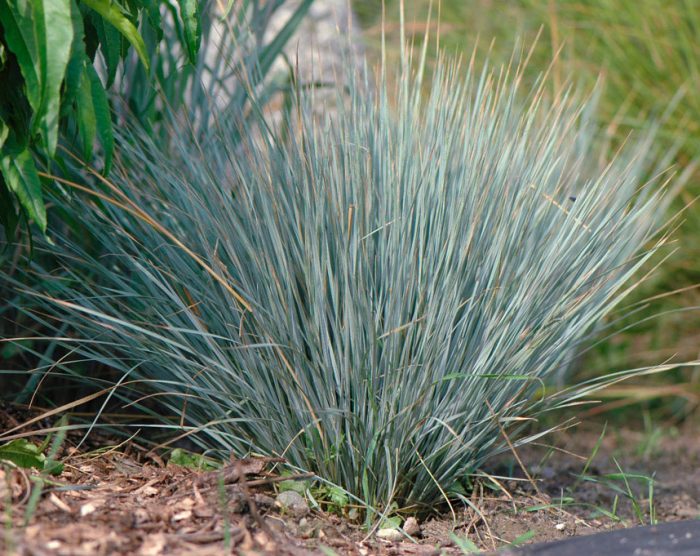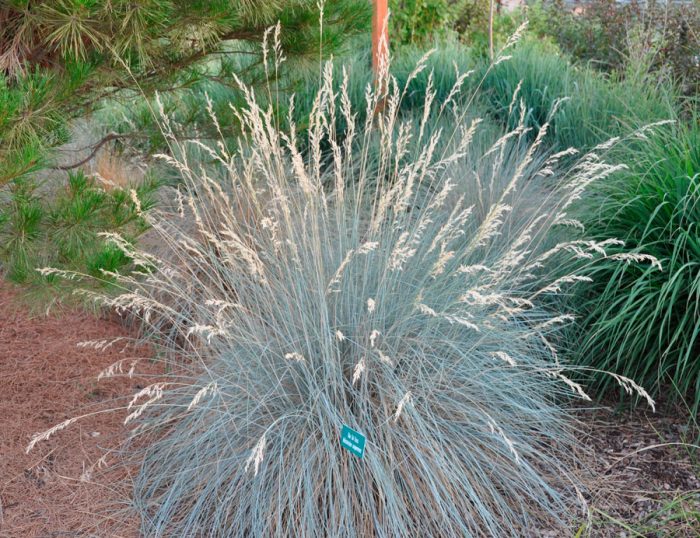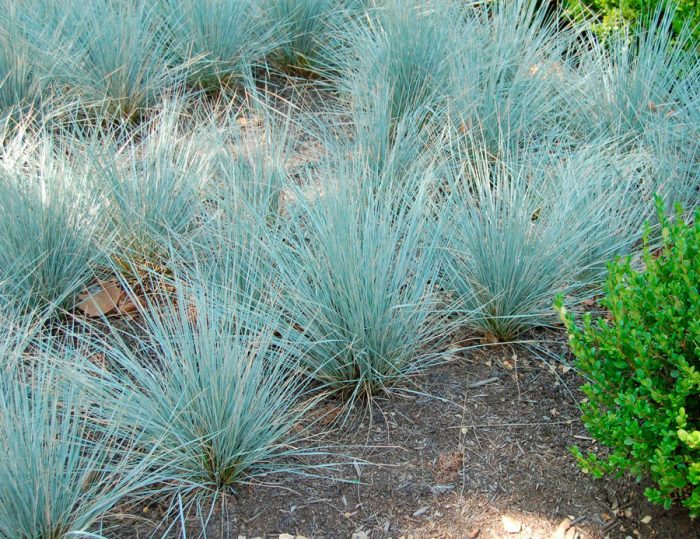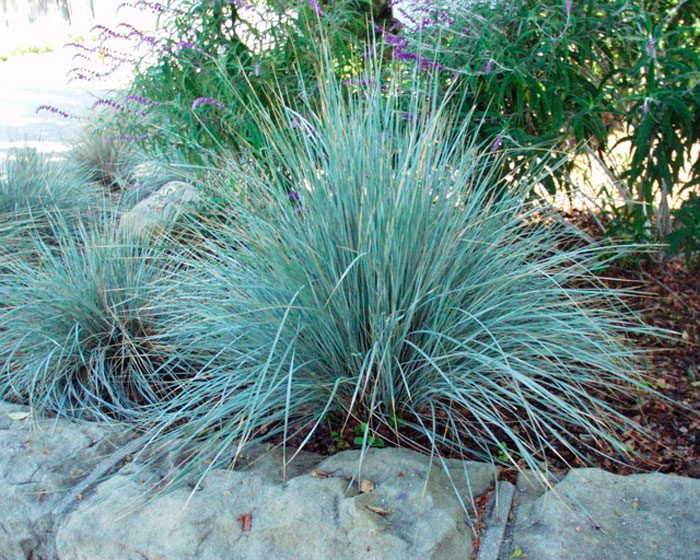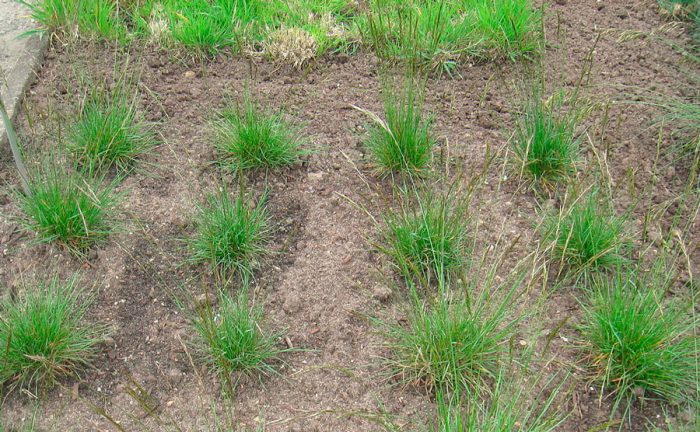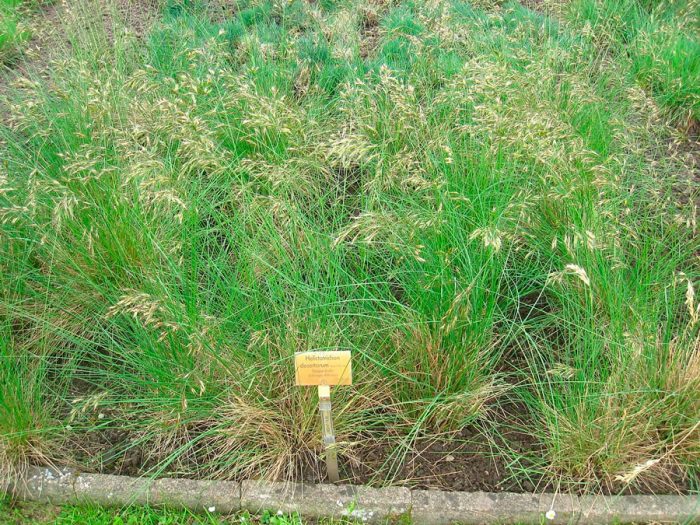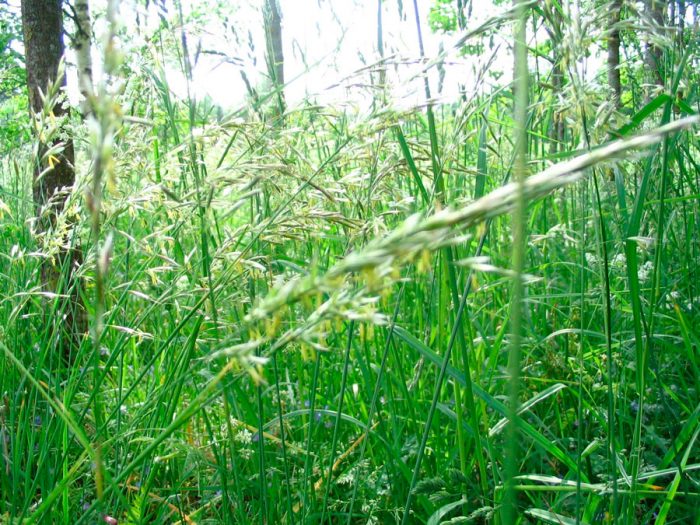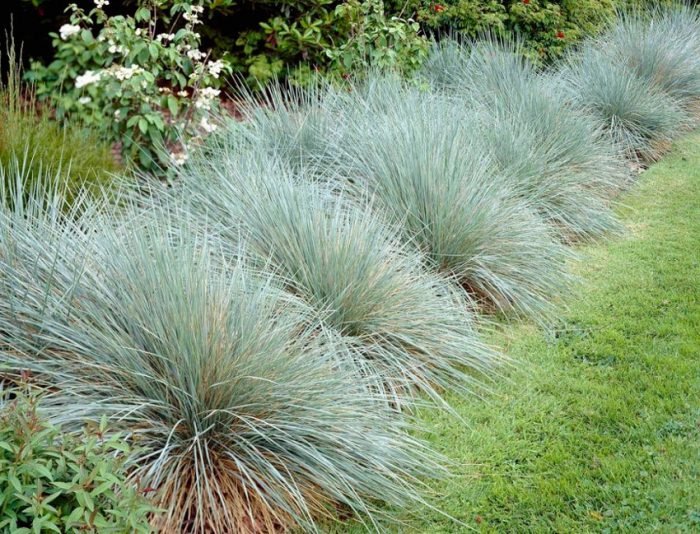The herbaceous perennial oat (Helictotrichon) is a member of the Bluegrass or Cereals family. According to information taken from various sources, this genus unites 40–90 species. The scientific name of such a plant was formed from a pair of Greek words, translated as "twisted hair", this is due to the fact that the awns of the colored scales in the lower part are twisted. In the wild, sheep can be found in Eurasia (but not in regions with a tropical climate), but also in South and North Africa. In the Asian, as well as in the African tropics, this culture is found in the highlands. Without exception, all oat species are fodder grazing plants, but since its foliage is very tough, it is rarely used as livestock feed. Evergreen oats, or white oats, or viviparous oats (Latin Helictotrichon sempervirens = Avena candida = Avena sempervirens), which is grown as an ornamental cereal, are very popular among gardeners. This species comes from the Western Mediterranean and the Alps, it is found at an altitude of 2.4 thousand meters above sea level.
Content
Features of the sheep
Evergreen sheep is the tallest herbaceous perennial plant, the height of which can vary from 30 to 100 centimeters. The bush can grow up to 100 centimeters wide. The root system of such a sheep is fibrous and lies relatively deep. Narrow erect leaf plates of linear shape reach 50 cm in length, they form a lush hummock. Their color ranges from gray-blue to green-gray. The stem reaches a height of about 1.5 m, on it there are narrow greenish-gray paniculate inflorescences, reaching from 40 to 100 mm in length. Bloom is observed from July to August. This species is characterized by winter hardiness, and it is highly decorative, in this regard, it is very often used in landscaping and landscape design.
Planting sheep in open ground
Landing rules
Gardeners prefer to propagate the oat by dividing the bush, which is an easy and quick way. If there is no such cereal in your garden yet, then you can grow it from purchased seeds. They are sown directly into open soil in spring, while they need to be buried in the ground by only 20 mm. It is quite easy to care for the seedlings of this plant.They need to be watered if necessary, and sometimes shallowly loosen the soil near the plants. The grown seedlings must be planted to make them more spacious. When transplanting, the plant is taken with a large clod of earth.
If desired, oats can also be grown through seedlings. Seeds are sown at the beginning of the spring period. For this, individual pots are used, because by replanting or diving plants from a common box, you can easily damage their root system. When the seedlings get stronger, they must be transplanted into open soil, it is recommended to do this by transshipment. To do this, first, the seedlings are watered abundantly, then they take a knife and hold it with its back side between the substrate and the walls of the container along the entire depth. As a result, the soil mixture will separate from the walls of the pot. After that, the container is laid on its side and the bush is carefully removed from it along with the soil mixture. Then it is placed in a hole, which must be prepared in advance. The free space in the hole is covered with soil. It is forbidden to pull or pull the plant during transplantation.
A well-lit open area is suitable for growing such a crop. It will be very good if it is located in the southern part of the garden. It is recommended to plant no more than 4 bushes on 1 square meter of land. When creating a hedge from a sheep during planting, a distance of 0.4–0.5 m is observed between the bushes. With a single planting of such a plant, the distance between the planted bushes should be slightly larger. Moderately dry and loose soil is optimal for growing sheep, but it should be infertile. Such a culture will not grow normally on fertile and moist soil, and shaded areas are also not suitable for it. If you plant a sheep in the shade, then its foliage will lose its decorative effect, as it will just turn green.
Caring for a sheep in the garden
When grown in regions with a temperate climate, such a plant does not need to be watered, even on hot and dry summer days. This species is adapted to the mountain climate, so if high humidity is observed on hot days, this will have an extremely negative effect on flowering. It is necessary to water the sheep only when there is a prolonged drought, because due to a lack of water, new foliage will stop growing at the bush, and the old one will begin to dry out.
To preserve the decorative effect of such a plant, it does not need to be fed frequently. 7 days after planting the bush in open soil, it must be fed using a small amount of fertilizer. After that, fertilizing is carried out once a season with mineral complex fertilizer.
Wintering
When the flowering of this plant comes to an end, the inflorescences that have lost their effectiveness must be removed. This cereal will not need shelter for the winter. During the first winter period, the color of the bush does not change and remains greenish-blue. In springtime, discolored leaf plates can be found in lush foliage, they look like gray strands. To make the plant attractive again, these leaves need to be pulled out, while trying to grab your hand as close as possible to the base of the plate. When the third winter is over, the plant will need to be rejuvenated.
Sheep breeding
Such a cereal is propagated by dividing the bush and seeds. You can read about the seed propagation method above. When the third winter is over, the bush will lose its former beauty, so it will need to be removed from the ground, divided into parts and planted. This procedure is carried out in the spring. If the bush is transplanted or divided in the fall, then it will be very weak, and if a wet winter comes out, then there is a high probability that rot will appear on the plant. Three-year-old bushes tolerate division and transplantation well.
Pests and diseases
The sheep have a very high resistance to all pests.If the summer period is hot and damp, and the soil in the area where such a cereal grows is poorly drained, then there is a high probability that the root system of the bush will be affected by a fungal disease, and rot may appear on it in winter.
If the weather is hot and the humidity is high, then because of this flowering, the oat becomes very scarce, while at the end of the summer period the bush can get rusty. In order to prevent this disease for growing cereals, it is recommended to choose those areas that are very well blown. Bushes affected by rust should be sprayed with a fungicide, for example, Bordeaux liquid.
If the root system decays, then the bush will need to be removed from the ground, and then all the affected areas are carefully cut out. Places of cuts must be sprinkled with crushed coal. After that, the plant is planted in a different place, while it should be borne in mind that it will need very good drainage.
Types and varieties of sheep with photos and names
The following types of sheep are most popular with gardeners:
Desert Sheep (Helictotrichon desertorum)
This steppe species is European-West Asian. In several regions of the Russian Federation, this species is included in the Red Book and is considered endangered. Such oat is a dense sod herbaceous perennial plant. The height of the bush can vary from 0.2 to 0.5 meters. The leaves of such a plant are folded lengthwise. Narrow paniculate inflorescences consist of 2 or 3 spikelets, which reach about 1.4 centimeters in length. The fruit of a sheep is the same as that of other representatives of the Cereals family, namely, a caryopsis. This species is cultivated relatively infrequently and, as a rule, it is grown as an experimental plant.
Fluffy sheep (Helictotrichon pubescens), or pubescent sheep
Under natural conditions, this type of sheep can be found in the Caucasus, in the European part of Russia, in Europe, Central and Asia Minor, as well as in the southern part of Siberia, while it prefers to grow in glades, meadows and steppes. The height of the bush varies from 0.3 to 1.2 meters. The rhizome is short. As a rule, the leaf plates are covered with dense short hairs, the width of the leaves is 0.4–1 cm. The length of the paniculate inflorescences is about 15 centimeters, they include two to four-flowered greenish (found with a stripe of violet color) spikelets, the length of which is 1.2–1.7 centimeters. This fodder plant is capable of producing a rich harvest if grown in an irrigated or flooded meadow. When grown on dry soil, the foliage of the bushes becomes very tough and strongly pubescent.
Evergreen sheep
A description of this type can be found at the beginning of the article. Gradually, the popularity of this species among gardeners and breeders is growing steadily. Popular garden varieties:
- Pendula - drooping and heavy flower ears of a bush;
- Robust - has a very high resistance to rust, even in damp summers;
- Sapphiresprudel - the plant is resistant to rust, the foliage is painted in a rich bluish-gray color, a cascade of spikelets of a silvery color is formed near the bush.

